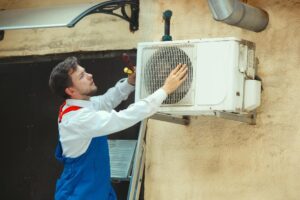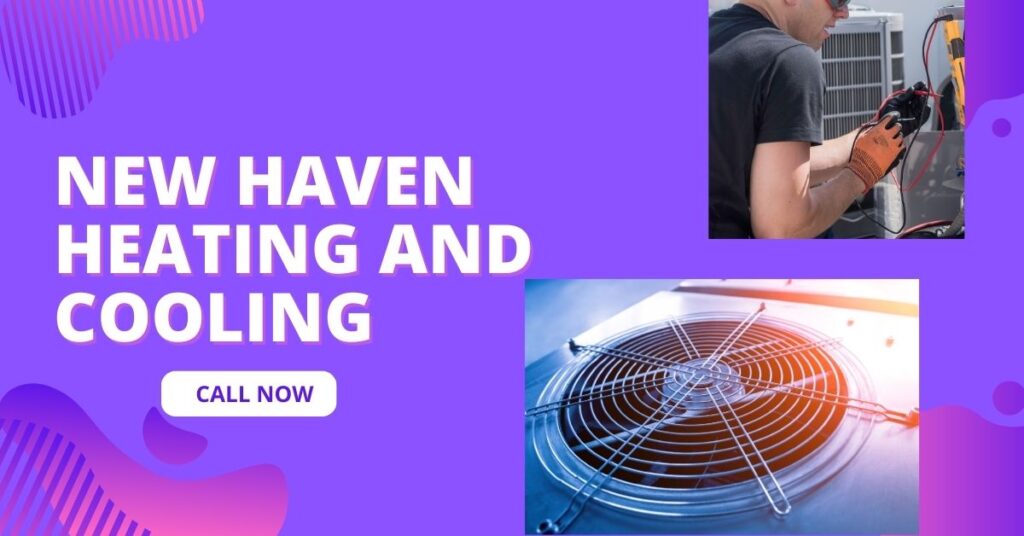Heating systems are incredibly important for providing home warmth and comfort, especially during the winter. Unfortunately, these systems can sometimes break down and stop working. If your heater is not working correctly, this article will provide you with some tips on troubleshooting it. We’ll provide step-by-step instructions on identifying and solving the underlying problem.
How to Troubleshoot If Your Heater Is Not Working
If your home’s heater isn’t working, there are a few things you can do to get it up and running again. One of these is checking the circuit breaker powering the furnace. Another is to check the thermostat to ensure the heat is working properly.
Check the Thermostat
If you are experiencing a problem with your heater, one of the first things you should check is your thermostat. A faulty thermostat can cause several problems and prevent your heating and air conditioning unit from working.
The thermostat is a control board that communicates with your heating and cooling system. It regulates temperature and turns on and off your furnace and AC. You can usually find the thermostat mounted on your main wall, above light switches.
If your thermostat is not functioning correctly, it is likely because it has a wiring issue. Make sure that the wiring is securely connected and not frayed or disconnected. This can be a hazard, so make sure that you have a professional take a look at it.
Another problem that can affect your thermostat is a faulty battery. In this case, you will need to reset your thermostat. To do this, you will need to remove it from the wall and reattach it.
Check the Battery on the Thermostat
When your heater isn’t working, it’s important to check the thermostat battery. If the battery light is on, you’ll know that the batteries are low. You’ll also want to look for signs of corrosion or malfunction.
Usually, you’ll need to replace the thermostat batteries once a year. This is because the thermostat relies on the batteries for power, and a dead battery will cause the heating system to revert to its default settings when power is cut.
If you’re unsure about what the thermostat needs, it’s best to consult your owner’s manual. It should list the type of batteries you’ll need, including the battery size.
A thermostat with a digital display should be able to tell you if the battery is low or not. If it is, you can use the reset button on your thermostat to restore it to normal operations.
The thermostat has several components, including a control board, which communicates with the HVAC system. It will send signals to turn the cooling and heating functions on and off.
Most models have a digital display that will let you know if the battery is low. It may even show you a message explaining why the battery is low.
Before you start replacing the thermostat battery, you’ll need to check your circuit breaker to see if it is tripped. Once you’ve determined this, you can proceed.
Check if the Gas is on and Working Properly
If your furnace or heater isn’t working right, first check to see if the gas is on. A gas leak is a severe health hazard and should be repaired immediately. The problem may be a broken line, a faulty flame sensor, or even a defective heating element.
Some older furnaces do not have a flame system but rather a pilot light. Similarly, some newer units are equipped with electronic ignition. Regardless of the type of furnace you have, if it’s not generating heat, you can try resetting the thermostat.
One of the easiest ways to check if the gas is on is to plug your stove into the furnace. You should get a slight sulfuric odor as a result of this.
You can also try to clean the fan in your furnace, which should help to clear out some of the dust. Another possible fix is to replace the filter. However, if this doesn’t work, you should consider calling a professional.
A gas pressure gauge should be checked as well. Low gas pressure is a common cause of a furnace lockout.
In addition to checking to see if the gas is on, you should also check to see if the furnace is generating any smoke. Many furnaces have a smoke indicator that will flash. This is usually not an error code, but it still indicates something is wrong.
Check if the Circuit Breaker Powering the Furnace has Tripped
If your furnace does not work, you should check if the circuit breaker powering it is tripped. It can be a temporary problem, but it can also signify a more serious issue.
Circuit breakers are safety devices that help to prevent fires and overheating. They are designed to detect when a certain amount of amps flows through a wire. When this amount is reached, the breaker will shut off the electricity to the circuit.
In most homes, there are a few different types of breakers. The most common are 15-amp breakers. These breakers will trip when the furnace draws more electricity than it can handle.
If you see a tripped breaker, try to reset it and see if your furnace works again. However, it would be best if you never kept resetting the breaker. Instead, you should contact an HVAC technician to inspect your furnace.
Several issues, including overloading, a dirty air filter, or an electrical panel can cause tripped breakers. You should also check for damage to the electrical panel.
Other things that can cause your furnace to trip a circuit breaker include a faulty motor, a tripped switch, or a blown fuse. A blown fuse means that there is a short circuit. This can be repaired by replacing the circuit breaker or by repairing the electrical panel.
If you’re having trouble with your home heater, you should check a few areas first. These include checking the thermostat and air filter. In addition, you may also want to take a look at your safety features.
Check the Air Filter
Changing an air filter is a very affordable way to maintain your furnace. You should change it at least once a month and replace it every three months if you have pets in the house or smoke.
If you notice your air conditioner is not running efficiently, your air filter may be dirty. Having a clean filter means that harmful substances are not trapped inside your home’s ductwork. This keeps the indoor air clean and can reduce allergy symptoms.
Having a clogged air filter can also cause your heating system to stop working. It can also reduce the amount of airflow in your home. In some cases, the air filter can be positioned incorrectly, and the air may pass through the edges of the filter.
You can determine if your air filter is a problem by inspecting the MERV rating of your furnace. You can find this information online. A high MERV rating indicates that the filter has a higher efficiency.
Check for any Blockage

A clogged air filter is one of the most common problems afflicting furnaces. It may not seem like a big deal, but a clogged filter can reduce the effectiveness of your heating unit. This can cause your heat exchanger to overheat. To prevent this from happening, make sure to change your filters regularly.
You should also check the condensate drain if you have a condensing furnace. Your system should have a drain tube and a condensate pan, which should be free of clogs. These clogs can cause your furnace to run less efficiently and cost you more money in the long run.
In addition, make sure you have an open gas valve and an on/off switch. You should also make sure your thermostat is level and in the appropriate position. Often, a small clog can be cleared by a technician.
The HVAC industry constantly showcases the best and most efficient equipment and technology. Fortunately, if you’re experiencing trouble with your heater, the professionals at Smith & Keene can recommend a high-efficiency system that’s right for your home.
The post Areas to Troubleshoot If Your Heater Is Not Working appeared first on https://gqcentral.co.uk


